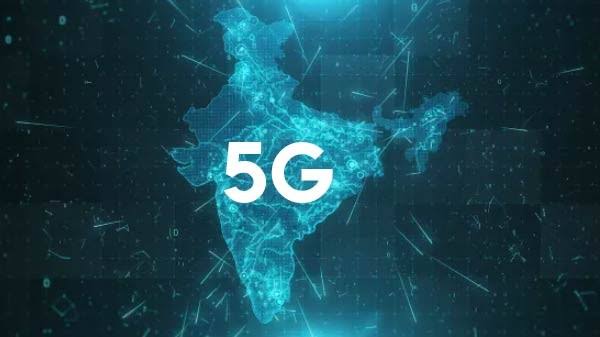News Highlights
- Prime Minister Modi will launch 5G in select cities on October 1.
- After the launch, India will get 5G mobile services, almost five years after the country took its first steps towards the launch of the next generation of mobile telephony.
About 5G technology
- 5G is the 5th generation mobile network. It is a new global wireless standard after 1G, 2G, 3G, and 4G networks.
- Operate in the millimetre wave band (30-300 GHz), transmitting massive amounts of data at rapid rates.
- Reduced latency will enable new apps to take advantage of 5G, the Internet of Things, and artificial intelligence.
- Increased capacity on 5G networks can reduce the impact of demand spikes, such as during sporting events and breaking news stories.
- Operates in three frequency bands: low, medium, and high.
- Low Band Spectrum – The maximum Internet and data exchange speed are limited to 100 Mbps in terms of coverage and speed.
- Mid-Band Spectrum – It has faster speeds than the low band; however, it restricts coverage area and signal penetration.
- High Band Spectrum – It has the fastest speed of the three bands, but its coverage and signal penetration intensity are severely limited.
Evolution from 1G to 5G
Application of 5G
- Enhanced Mobile Broadband (“EMBB”)
- EMBB extends the current 4G LTE mobile broadband services to the next level of higher bandwidth capacity.
- Ultra-Reliable Low Latency Communications (“URLLC”)
- It provides robust, uninterrupted data connections for mission-critical applications in industry and governments, such as aircraft navigation systems, nuclear reactor safety systems, telemedicine, automated factories and warehouses, etc.
- Massive Machine Type Communications (“MMTC”)
- MMTC supports many devices, such as IoT devices and sensors, in a small area.
- Internet of Things (“IoT”)
- IoT refers to a network that connects devices instead of people. It has several applications – for farming, industrial automation, smart retail, supply chain management, construction management, and disaster management.
- Artificial Intelligence (“AI”)
- 5G technology will enable faster access to huge data pools, data collection sensors and computing powers to rapidly build AI models.
- Media and Entertainment
- The media & entertainment market has witnessed a boom over the last few years.
- Telemedicine
- Telemedicine is a fast-emerging area in healthcare.
- It is a broad concept involving teleradiology, tele consultation, telenursing, tele-ICU and telesurgery.
- Smart Cities
- The infrastructure needed for smart cities, like traffic sensors, disaster monitors, early warning systems, autonomous vehicles, delivery robots, drones, network sensors, public transport, public utility monitors, security systems, etc
Pros of 5G
- Higher data transfer speed – more than ten times the speed provided by 4G.
- Ultra Low latency for synchronous communication.
- Significantly more device connections in a coverage area.
- Increased bandwidth due to more available frequency channels.
- Convergence of cellular and wifi technologies.
- Greater energy efficiency per bit of data transferred.
- Utility for new technologies- e.g. AI, drones, Virtual Reality.
- More Applications- e.g. commercial, entertainment, defence.
Cons of 5G
- The massive Capital expenditure required for new installations.
- The larger scale of infrastructure deployment is due to small cells.
- Higher operational and maintenance costs.
- Limited coverage is due to the shorter reach of the signal.
- Susceptible to atmospheric absorption and blocking through the material.
- Need new 5G capable devices.
- Interference with more applications in the same frequency.
- New security and privacy issues.
Pic Courtesy: freepik
Content Source: Indian Express



